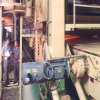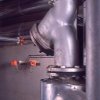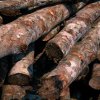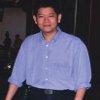Metro steps out of the fire
22 October 2003Recent technology has improved the guard around the heart of the line – the press – in the panel industry, an industry which requires cost-effective and flexible production for high capacities.
Metro MDF is the market leader in Thailand with an annual production around 210,000m3, representing 25% of MDF produced in Thailand. In the year 2000 the company became one of the first MDF mills in Asia to install a new press guard system from the Swedish company, Firefly.
“It must be said, even in front of the supplier,states Mr Piya Piyasombatkul, president of the Metro Group, “that I would recommend any wood working factory not to save money on this type of equipment. I will install a press guard system in all presses we have. It should be an industry standard.”
Metro MDF is part of the Metro Group with facilities in and around Bangkok. The mill is located in Karnchanaburi, some 100km west of Bangkok. “The business started about 50 years ago with a teak sawmill,says Mr Piya. “ My father then set up the first privately owned plywood factory in Thailand, in Nonthaburi; at that time outside Bangkok, now in greater Bangkok.”
“Right from the beginning we specialized in thin board products. Then some 15 years back it started to become hard for new logging concessions of teak and raw material became quite expensive. We had to rethink and back in 1990 we went into the fibre-board business, acquiring a wet hardboard line from Skinnskatteberg in Sweden, and this became my first job for the family.”
“That situation pushed us to the limit of survival, we were forced to learn fast, to maximise production and quality and maintain good machinery,continues Mr Piya. “We did everything to sell, in thickness and sizes, but it was hard just to sell raw MDF board. A good decision was then to go into value added products, which resulted in a new company, Metro Panel, where we utilise some 25% of our MDF production to make veneered and overlaid panels, doors and door skins. Our market is outside Thailand to some 70% with customers for raw board and value-added products – the last group to be found in Europe and the United States.
“Our philosophy is conservative and that goes for everything we are doing. This means we will be sure before we invest, we would really like to know what we are doing. Buying a big package from one single supplier is ok as long as you are within their business area. But in order to be better and learn fast you have to buy directly from those with great experience within a certain area. For instance, in the first MDF line, the detection and extinguishing equipment were included in the main supplier package. We later learnt, via direct contact with the sub-supplier of the fire protection system, that their knowledge and experience could help us improve both safety and productivity,continues Mr Piya.
“I have also learnt that expanding is the only way to survive and when Thailand in 1997 devalued its currency, we were quick to decide on a second MDF line. So, in the middle of a big crisis, we made a tough decision and it was a really good decision. This second line has a continuous Contipress from Metso, designed for high speed and thin boards. Until then, when we were in the buying stage, the fastest presses were running at 60m/min, but we were aiming at 72m/min and we have actually been running at 84m/min. It was quite an interesting project, but I think now we have pushed the press to its limits.”
Well-known risks
Everybody in the panel industry knows that fires and fire risks are part of the game and a matter of great concern. There are several places along an MDF line where something can happen and the worst scenario is a fire in the press itself.
To obtain a required safety level, it is of utmost importance to conduct a customized risk analysis. Important parameters to consider are press type, manufacturer, press speed, age of press, location of frames and valves, cabling, type of products produced, cleanliness procedures etc.
The mill people contribute their knowledge and experience from production and, as a result, a customised design is proposed where each detector and water nozzle are laid out in the right position, giving just the amount of equipment needed.
Flame and hot body detection are the two most important areas to cover in and around the press. By using a two-channel UV/IR (ultra violet/infra red) OAD (open area detector) detector, flames around and in the press will effectively be discovered. The combination of UV and IR will also make the detector very fast and, importantly, less sensitive to other energy sources.
Combined with IR hot body detectors in extraction ducts from the press, and temperature detectors, the overall detection will be further improved in order to give as early a warning of a fire as possible.
Harmless water mist
Conventional sprinklers used on a press fire often cause other problems: A flood of cold water and hot steel do not go well together and the amount of water can also create electrical problems, a time consuming clean-up and a possible mill shut-down.
“Today such a situation would be devastating”, explains Mr Piya. “If you are away from the market a couple of months or so, then you are lost for ever.”
By using water mist with a well tuned customised droplet size, it is possible to avoid damaging the press and still extinguish the fire or stop it from spreading.
Such an automatic system will also make the operators feel more secure and able to manually activate it if needed.
The combination of a very rapid detection and extinguishing, released in less than a second, is the key to smooth and continuous operation.
Improved uptime
“I think they have a good concept,says Mr Piya. “It is simple, while other suppliers have much more equipment, making, among other things, maintenance much more complicated. The system concept controls the fire and is built up in such a way that the operators are not afraid of releasing the system – and this is important,he says.
“If I compare with before these installations of press guard systems in line 1 and 2, the operators themselves had to decide which and what equipment to use and while deciding, the fire expanded.
“Another aspect in favour of this system is the risk analysis performed prior to installation, giving as result the amount of equipment needed, in the right positions – we don’t over-invest. It is also a main reason behind our ability to increase press speed and production and still feel safe.”
Following a fire in a filter after the sifter back in 1997, Metro had its first contacts with Firefly. After installing their press guard system on line 1 in year 2000, Metro has now also installed the system in line 2 after a careful and joint investigation as part of their risk analysis. Firefly also supplied the remaining fire detecting and extinguishing equipment in line 2.



